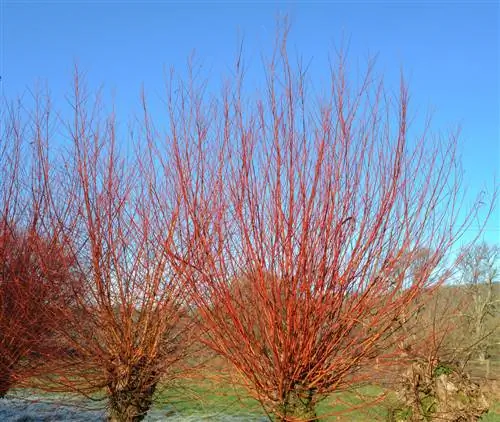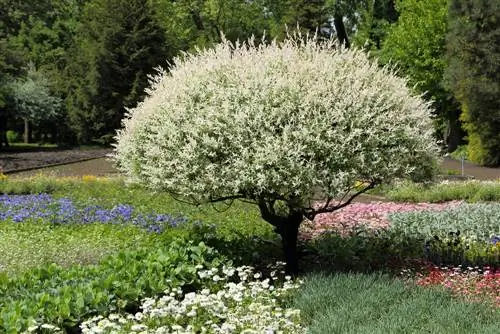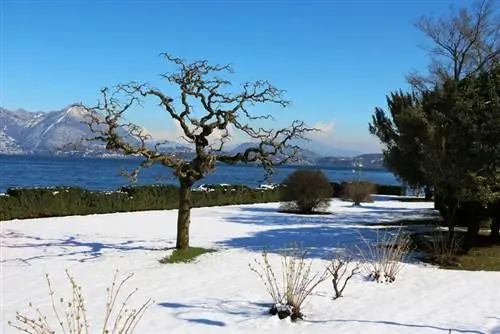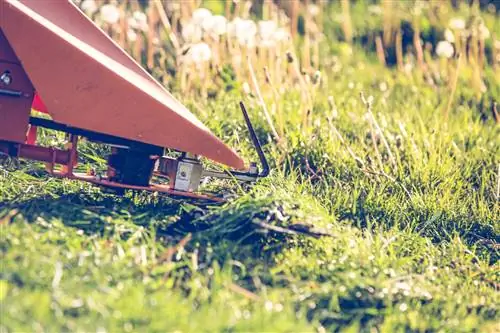- Author admin [email protected].
- Public 2023-12-25 17:45.
- Last modified 2025-01-23 11:21.
The white willow is the largest willow species in Germany. It reaches a maximum height of 30 meters. It shoots up rapidly, especially in the first few years. Only later does growth only increase by a few centimeters. However, the tall growth can cause space problems in your own garden. By regularly shortening your white willow, you can keep the spread under control. Find out here what you need to consider.

When and how should you prune a white willow?
A white willow should be cut between October and February to provide animals with the necessary habitat and to comply with legal requirements. Prune the willow to shape in winter and carry out another shape cut in spring if necessary. The cutting tolerance also allows for strong cuts.
Pruning is for your own protection
A pollard willow is known for its strong shoots. Pruning must be carried out at least every ten years in order to protect people and the deciduous tree itself, because
- due to the strong shoots, the tree is in danger of breaking apart
- the flexible branches are easily torn off by storms
Use clippings
It used to be common practice to shorten white willows so much that only a stub remained at the base. This was called a pollard willow. Even then, this pruning had a double benefit. The extremely flexible willows were used, for example, to weave baskets. Take an example and don't just throw your clippings into the compost heap. There are numerous ways to use the branches in a practical way:
- as material for a self-woven electric fence, a privacy screen or a bed border
- tied together as a decorative rod
- to multiply the white willow
Time
Since numerous animal species live in white willows and birds use the trees as nesting places in the summer months, you are only allowed to cut a white willow from October to February. This is even required by law and is punished with high fines if it is violated. It is best to cut your white willow in winter. In the spring you can then carry out another topiary cut.
How much to cut back?
You don't have to worry about damaging your pasture by cutting it back radically. The tree species is considered to be very vigorous and tolerant of cutting. After a short time, the white willow sprouts again, even after severe pruning. This is even important so that you can keep growth under control.






